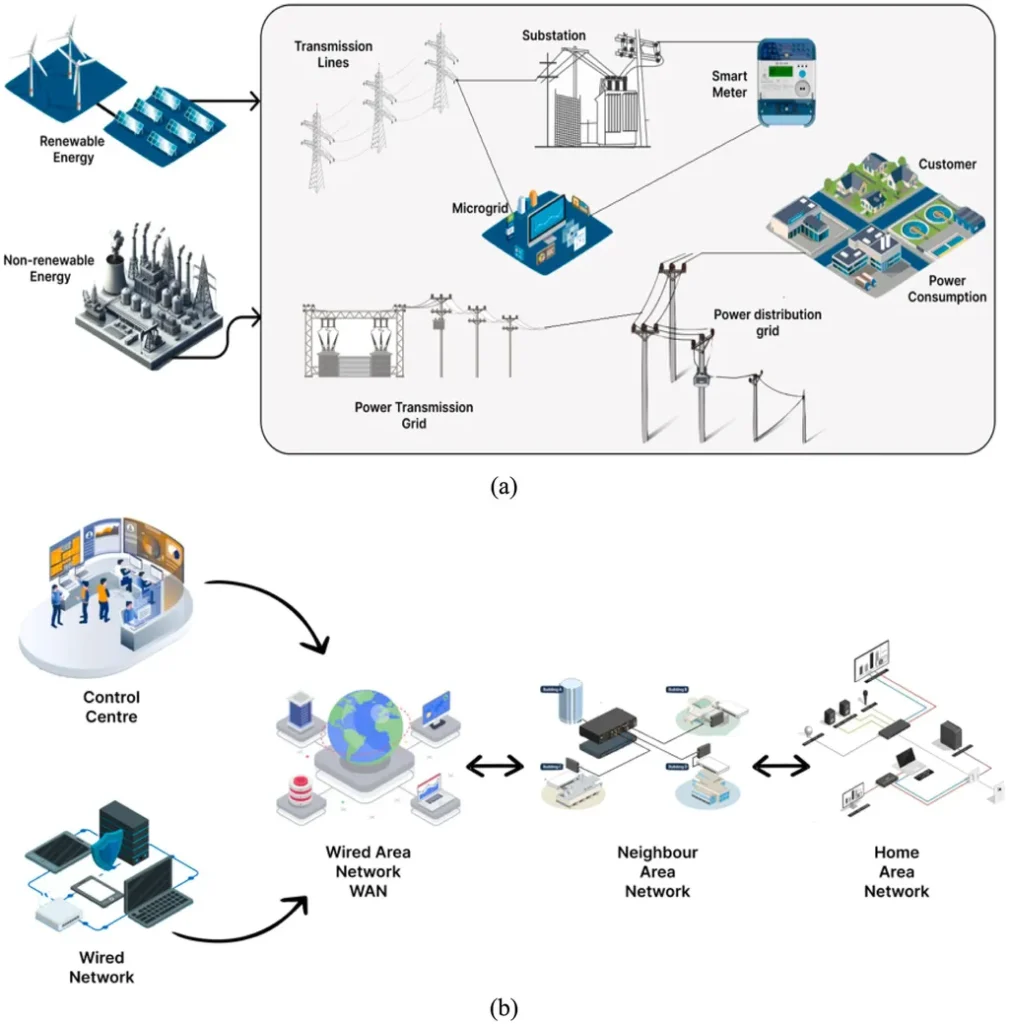In the ever-evolving landscape of power systems, the quest for efficient operation, planning, and security has taken a significant leap forward. Researchers at Amirkabir University of Technology in Tehran, Iran, have developed a novel approach to power system state estimation that promises to enhance accuracy and speed while simplifying the process. The study, led by SeyedHamed MirMohammadAli Roudaki and published in the Amirkabir University of Technology Journal of Electrical Engineering, combines optimal Phasor Measurement Unit (PMU) placement with an artificial neural network trained by the Whale Optimization Algorithm (WOA).
As power systems grow increasingly complex due to rising energy demands, real-time monitoring and control become paramount. State Estimation (SE) tools are essential for nonlinear power grids, providing the real-time data that most network applications rely on. “The output of the state estimator nearly represents a true state of the system,” explains Roudaki. “This need is particularly more in focus today due to deregulated and congested systems and smart grid initiatives.”
The research introduces a framework that uses a linear state estimation method alongside optimal PMU placement to ensure complete observability. By employing an artificial neural network trained by the WOA, the model can estimate voltage magnitudes and phase angles as power system states. This approach not only increases accuracy and execution speed but also significantly reduces the complexity of the formulation.
To measure the accuracy of the state estimation, the researchers considered a seasonal load profile, making the simulation more realistic. The results demonstrated the minimum estimation error for IEEE 14 and 30 buses benchmark systems, showcasing the effectiveness of the proposed method.
The implications of this research for the energy sector are substantial. As power systems become more interconnected and complex, the need for accurate and rapid state estimation becomes crucial. This method could enhance grid reliability, improve decision-making processes, and optimize power system operations. “The trained model can be used to estimate voltage magnitudes and phase angles as power system states,” notes Roudaki, highlighting the practical applications of the research.
Looking ahead, this innovative approach could shape future developments in power system management. By integrating advanced algorithms and neural networks, the energy sector can achieve more efficient and reliable operations, ultimately benefiting consumers and industry alike. As the demand for energy continues to grow, such advancements will be vital in ensuring the stability and security of power systems worldwide.

